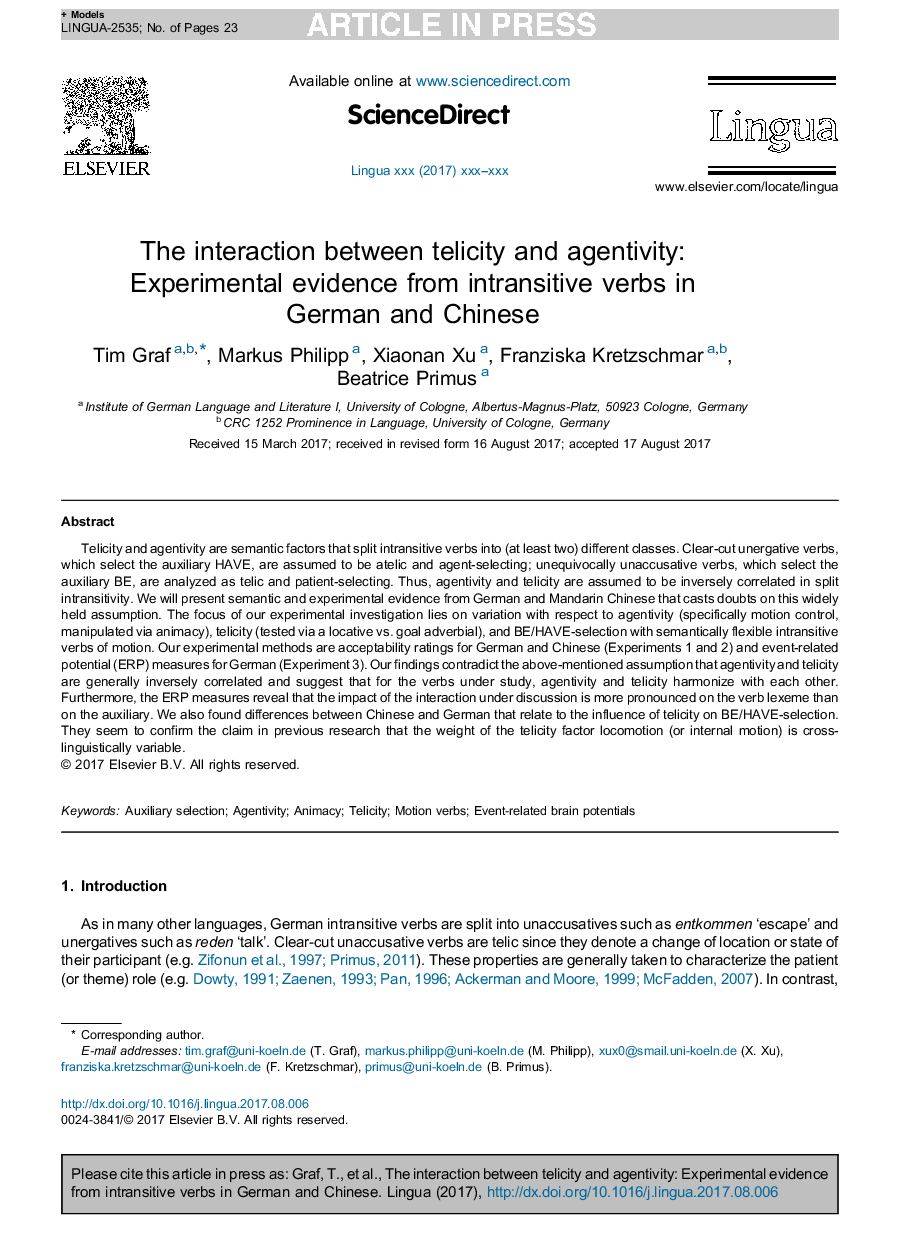| کد مقاله | کد نشریه | سال انتشار | مقاله انگلیسی | نسخه تمام متن |
|---|---|---|---|---|
| 7298460 | 1475018 | 2017 | 23 صفحه PDF | دانلود رایگان |
عنوان انگلیسی مقاله ISI
The interaction between telicity and agentivity: Experimental evidence from intransitive verbs in German and Chinese
دانلود مقاله + سفارش ترجمه
دانلود مقاله ISI انگلیسی
رایگان برای ایرانیان
کلمات کلیدی
موضوعات مرتبط
علوم انسانی و اجتماعی
علوم انسانی و هنر
زبان و زبان شناسی
پیش نمایش صفحه اول مقاله

چکیده انگلیسی
Telicity and agentivity are semantic factors that split intransitive verbs into (at least two) different classes. Clear-cut unergative verbs, which select the auxiliary HAVE, are assumed to be atelic and agent-selecting; unequivocally unaccusative verbs, which select the auxiliary BE, are analyzed as telic and patient-selecting. Thus, agentivity and telicity are assumed to be inversely correlated in split intransitivity. We will present semantic and experimental evidence from German and Mandarin Chinese that casts doubts on this widely held assumption. The focus of our experimental investigation lies on variation with respect to agentivity (specifically motion control, manipulated via animacy), telicity (tested via a locative vs. goal adverbial), and BE/HAVE-selection with semantically flexible intransitive verbs of motion. Our experimental methods are acceptability ratings for German and Chinese (Experiments 1 and 2) and event-related potential (ERP) measures for German (Experiment 3). Our findings contradict the above-mentioned assumption that agentivity and telicity are generally inversely correlated and suggest that for the verbs under study, agentivity and telicity harmonize with each other. Furthermore, the ERP measures reveal that the impact of the interaction under discussion is more pronounced on the verb lexeme than on the auxiliary. We also found differences between Chinese and German that relate to the influence of telicity on BE/HAVE-selection. They seem to confirm the claim in previous research that the weight of the telicity factor locomotion (or internal motion) is cross-linguistically variable.
ناشر
Database: Elsevier - ScienceDirect (ساینس دایرکت)
Journal: Lingua - Volume 200, December 2017, Pages 84-106
Journal: Lingua - Volume 200, December 2017, Pages 84-106
نویسندگان
Tim Graf, Markus Philipp, Xiaonan Xu, Franziska Kretzschmar, Beatrice Primus,